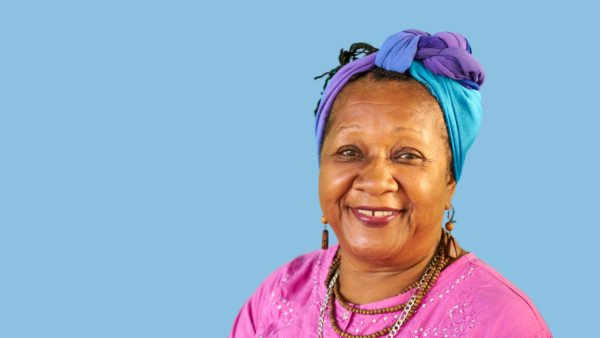Why is it that the ‘news’ is pretty much always negative? We live in a world wired towards negativity bias (I podcast on this in Season 1, episode 2). So, as humans, we react quickly to potential threats, that is we’re programmed to hear about those things first; in addition, we kind of like to hear about other people’s misfortune so that we feel better about our own situation (so called schadenfreude).
The media has evolved to give us more of what we want – negative stories about bad things happening because study after study has shown that that’s what we want to consume. Today’s podcast is what to do about that when it all gets too much – how to rebalance all this negativity to get a sense of what’s really going in the world as a whole.
My name’s Dr Paul Brewerton, the strengths guy, Doctor of Psychology and Founder of Strengthscope. I podcast first thing each week to get you off to a good start on all topics relating to life and to work and to strengths, bringing a bit of science your way too.
See the trouble is that, as humans, negativity bias switches us towards being open to the negative. We place greater emphasis on negative stimuli. Then another human bias (a psychological shortcut if you like – we humans have loads of these, by the way), availability bias means that we’re more likely to remember the negative news that we’ve seen because it’s more current in our memories.
Then, to top it all off, yet another psychological shortcut, confirmation bias means we’ll probably go and look for supportive evidence of anything that’s available to us, which as we’ve learned, is likely to be negative. So we end up in a sea of negative, believing that everything is negative.
I came across this wonderful book recently which I was reading with my son at bedtime for a few weeks. It’s called ‘Big Ideas for Curious Minds’ and the chapter that relates here is called ‘the news doesn’t always tell the whole story’. Here are a couple of paragraphs:
‘…there is something very strange about the news: it actually misses out nearly everything. Think of all the things that you never see in the newspaper. There wasn’t a story about how you had a good time at your friend’s house last week, or about the cake your brother made your Mum for her birthday, or the funny thing that your Dad said yesterday or about how lovely it is when someone reads you a story.
There are lots of things that happen in your life that are not in the news – and that’s just in your life. The same sort of things that are going on for almost everyone. Perhaps two boys in Singapore fell out, then made friends again. That’s important – but it wasn’t in the news.
A girl in South Africa might have thought she’d lost her favourite trousers, but it turned out her Mum had put them in the laundry basket. Still not in the news. Probably a cat in Madrid found a lovely warm windowsill and lay there stretched out the whole afternoon, but that didn’t even make it into the local papers. There are billions of things like this that happen every day – and none of them are in the news. If they were, you’d get a very different – and more correct – picture of what the world is really like.’
This also reminds me of a scene from a film called Wings of Desire; in this scene, two angels who’ve been watching over us humans from their position of invisibility for thousands of years just exchange stories about what they’ve witnessed people doing over the past few weeks.
It’s all quite mundane but the way they describe what they’ve seen is pretty magical, largely because they can’t experience these things themselves, because they’re angels of course and they can’t interact with our world, they’re passive observers of it – and that perspective is a really important one, that leads me into a couple of my suggested antidotes to a world filled with negative news.
So what can you do when you feel the balance is off, when you feel the need to get a more positive world view? I have 6 tips below:
1.Remember what you’re grateful for
Practicing gratitude has a number of well-known benefits: people who do this regularly report more positive emotions, better sleep, higher levels of compassion and kindness, and they may even have stronger immune systems. So remember to list (and even share) three things that you’re grateful for each day at the start or the end of the day, and you’ll start rebalancing all that negativity almost straight away.
2. Notice amazing little things happening all the time
This is about mindfulness and resonates with the angels witnessing the human goings-on that I mentioned just now in that film. Taking time out to breathe and to savour the little things in your day can make all the difference to the way you see the world overall. A couple of researchers, Kiken and Shook, recently found an increase in positive judgments and higher levels of optimism when people just practiced mindful breathing. For more on meditation and mindfulness, check out my podcast at Season 4, episode 9 on what meditation did for me.
3. Focus on strengths
Take time to remember your strengths and the strengths of others and call them up when you need them. This can shift you towards a more positive mindset and will help you feel better equipped to deal with challenges and difficulties by giving you options as to how you approach them. For more on shifting yourself to a more positive psychological state, have a listen to my podcast at Season 7, episode 5 on the path of possibility, managing your mindset in tough times.
4. Laugh more
Whatever makes you laugh, do more of it. The health benefits are both short-term and long-term: improving your immune system through the release of health beneficial neuropeptides which help you fight stress; relieving pain, due to release of endorphins; and improving mood, by relieving any symptoms of depression or anxiety. So get your laughter game on and find something funny to giggle at; sharing the laughs can also help deepen your sense of connection with others, which releases another positive body chemical, oxytocin.
5. Create more positive interactions
Research into positive vs negative interactions suggests that we need to up the ratio of positive to negative comments that we give (Zenger & Folkman, 2013). This is because as mentioned, humans place greater emphasis on negative stimuli over positive as a threat response. That means we need to dial up the ratio of positives to negatives to around 5:1 in order to build better relationships and boost our own and others’ performance. Otherwise, we get all too quickly stuck in a negative mindset, believing things are worse than they actually are.
6. Positive news feeds
Finally, to counterbalance all the negative news out there, how about trying out some positive news feeds: there are plenty but what about www.notallnewsisbad.com and www.thehappynewspaper.com for a start? These news feeds often focus on ‘smaller’ news items that remind us of the hope and positivity out there in the world.
Kind of like the ‘…and finally’ items on some news programmes which attempt to balance about 99.5% negative news bias with a 0.5% positive news story about a kitten or an octopus. But these alternative news feeds have well-curated meaningful content that will help give you an even world view.
So there are my tips to try and unbias the news that you read and hear, to get a more balanced picture of the world: remember what you’re grateful for, notice the little things, focus on strengths, laugh more, create more positive interactions and try out some positive news feeds.
That’s it for this week, I hope you’ve found today’s podcast helpful. If so, please like and share because that will spread a little more happiness in the world. Till next time, stay happy.
This podcast is available on all major podcast platforms. Find it on Apple podcasts, Spotify, Google podcasts, Stitcher, ACast, TuneIn, Breaker and Soundcloud. Check out the back catalogue, (please) leave a review and subscribe to get them every Monday morning!












